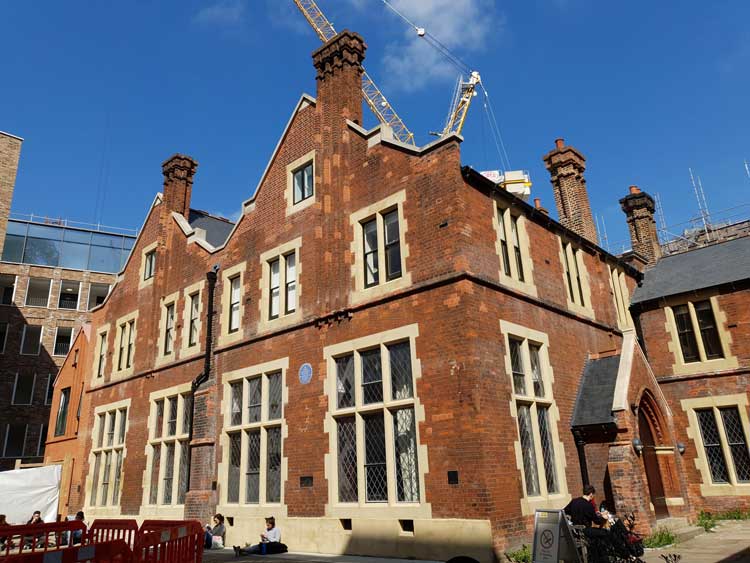In early November, 1888, the Jack the Ripper murders, and the subsequent press reporting on them, had resulted in Whitechapel being universally regarded as a district where nothing good went on.
However, many locals were beginning to resent the unsavoury depiction of the area and, in consequence, articles were beginning to appear in newspapers across the country that were trying to highlight the good things that Whitechapel had to offer.
The following such article appeared in The Eastern Morning News on Thursday, 1st November 1888 :-
THE TOYNBEE RECORD
We have received the first two numbers of the Toynbee Record, a monthly account of the work being done by the Universities settlement in Whitechapel.
It is, of course, especially interesting to those who know the East-End of London, but it is also full of valuable hints to all who are engaged in educational or philanthropic work, whether in London or in the provinces.
A large number of the schemes which are carried on with great success in Whitechapel might with equal profit be attempted in every large town in England.
The Toynbee Record contains an epitome of the kind of work which the most successful London organisers have found suitable to the needs of classes which exist everywhere .

WHITECHAPEL NOT A CESSPOOL
Those who are accustomed to regard Whitechapel as a sort of social cesspool may be surprised to find that in Commercial street, Whitechapel, advanced educational work finds ample support, that there is thoroughly healthy intercourse between all classes, and a lively interest in the most serious subjects.
RECOMMENDED READING
We would recommend those who are anxious to know more about this matter to get the Toynbee Record and read it for themselves. It appears monthly, it costs no more than a penny, and can be had on application to the Secretary, Toynbee Hall, Commercial -street.”
A ROYAL VISIT TO SPITALFIELDS
Meanwhile, on Wednesday, 30th October, 1888, the district of Spitalfields had received a royal visit, and The Morning Post reported on the event in its edition of Thursday, 1st November, 1888, commenting on how the visit had brought some much needed joy to the residents of the area at such a challenging time:-
“Yesterday afternoon the Princess Mary Adelaide opened the King Edward Institute and Schools in Albert-street, Spitalfields, in connection with the King Edward-street Mission.
The original institution was founded in 1546 by the Rev. W. Tyler, minister of the Independent Chapel in Hanbury- street, which has recently obtained an unenviable notoriety.
A TECHNICAL INSTITUTE
The new institute was opened as a Ragged School and Refuge by the Earl of Shaftesbury in 1850, and subsequently was converted into an industrial school for girls; and in future it is to be devoted to the purposes of a technical institute.
Her Royal Highness, who was accompanied by the Princess Victoria of Teck, arrived at four o’clock, and was conducted over the building by the reception committee.
AN ADDRESS OF WELCOME
Returning to the large hall, an address of welcome and gratitude was read by Mr. Charles Montague, honorary secretary.
Her Royal Highness, having accepted a copy of the address, said:- “I have now the pleasure of declaring this building open, and I trust that it will be a blessing to the whole neighbourhood.”
SUNSHINE AT A TIME OF GLOOM
Mr. S. Montagu, M.P., in moving a vote of thanks to the Princess, remarked that in Whitechapel they were all fully sensible of the generous consideration which was shown towards the East-end of London by all the members of the Royal Family. The Princess by her visit that day had brought sunshine to Whitechapel at a period of its deepest gloom.”
